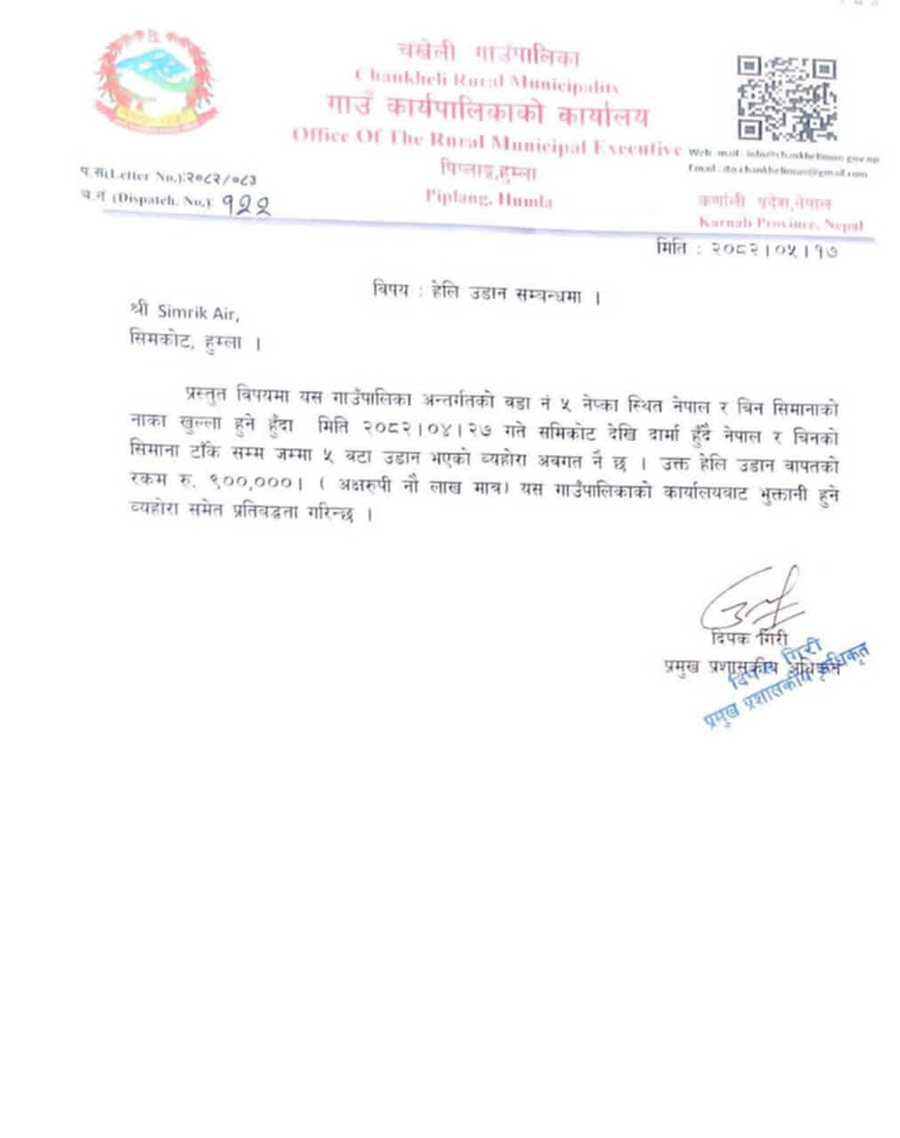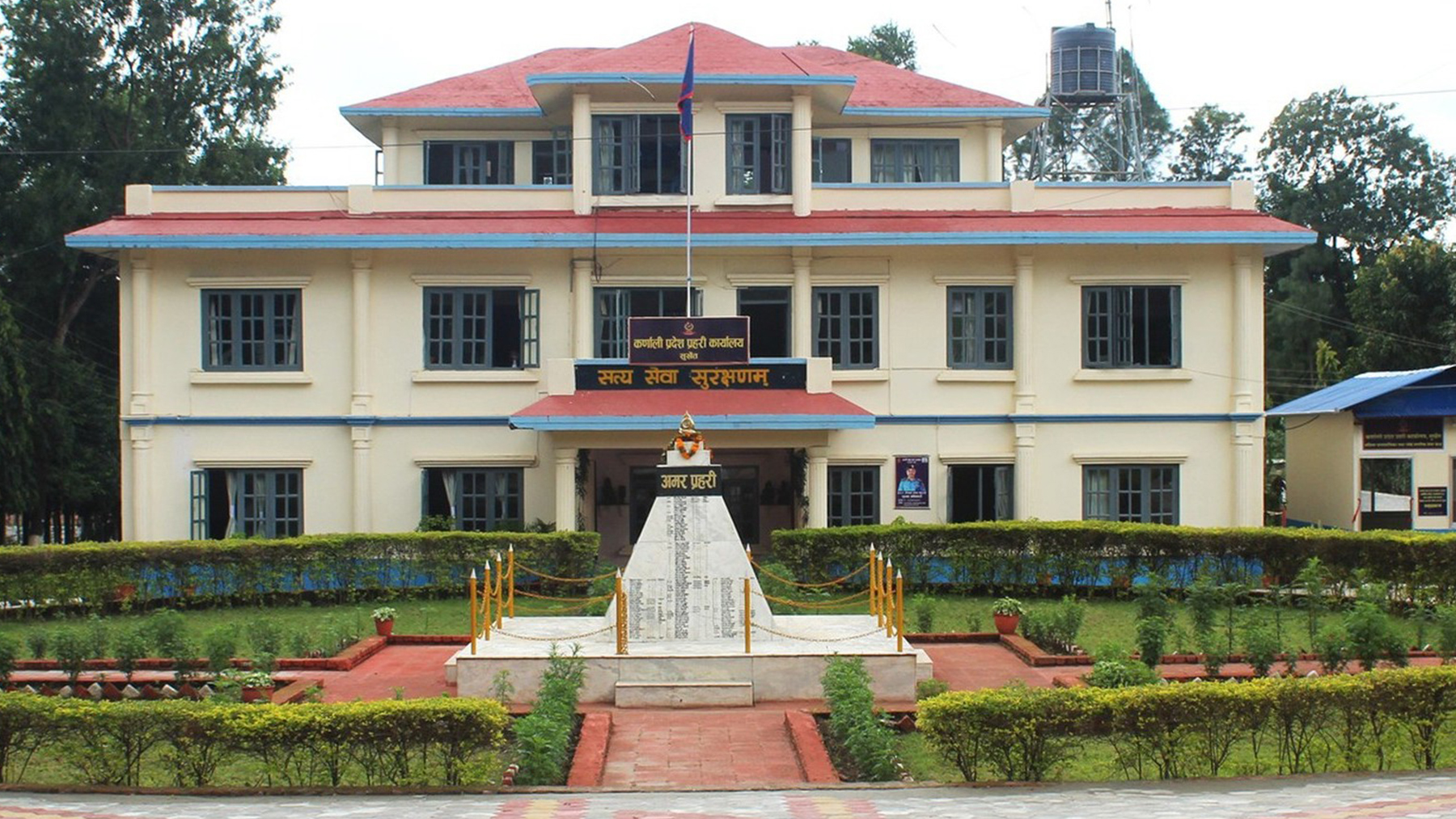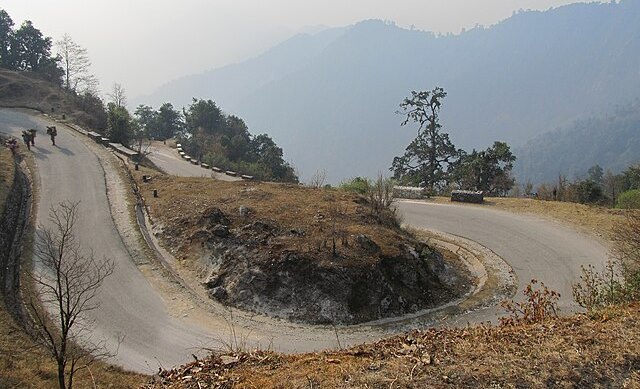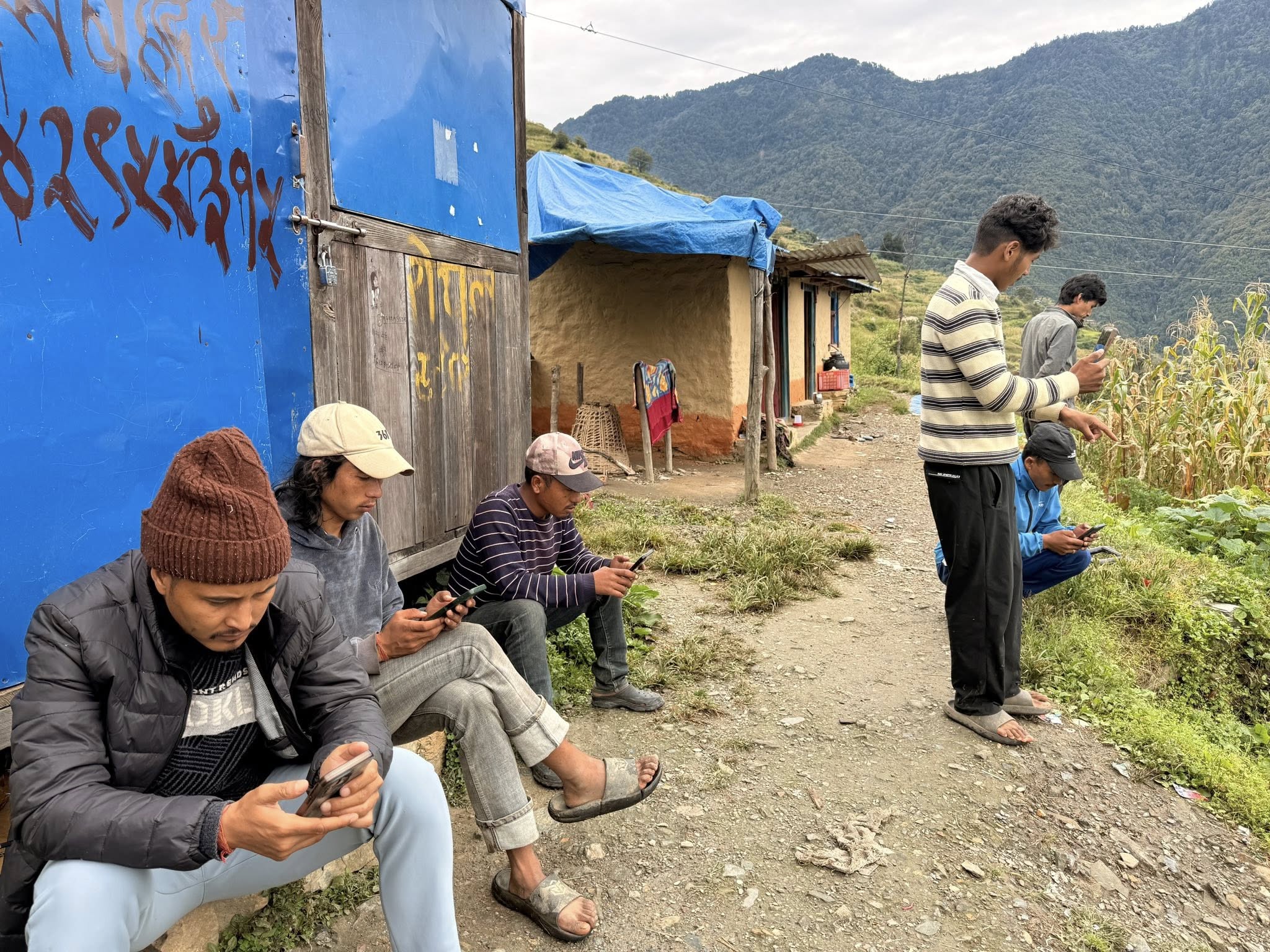ECONOMIC ANALYSIS OF WOMEN ENTREPRENEURSHIP IN JAJARKOT DISTRICT, NEPAL

 – Nem Bahadur Shahi
– Nem Bahadur Shahi
Branch Manager
Rastriya Banijya Bank
Mulpani, Surkhet
Abstract
Women entrepreneurship plays a pivotal role in fostering inclusive economic development, especially in rural and underdeveloped regions like Jajarkot district in Nepal.
Despite facing significant socio-economic and cultural constraints, women in Jajarkot are gradually engaging in entrepreneurial activities, contributing to household income, local employment, and community welfare. This study aims to analyze the economic dimensions of women entrepreneurship in Jajarkot, focusing on the nature, scope, and outcomes of their entrepreneurial activities.
Using both primary and secondary data, this article examines the level of income generation, access to resources, market constraints, and the support system available to women entrepreneurs. The findings suggest that while women’s involvement in entrepreneurship has led to better economic self-reliance and empowerment, structural challenges such as lack of financial access, limited mobility, and insufficient policy support persist.
The study emphasizes the need for targeted policy interventions, skill development programs, and enhanced institutional support to foster sustainable women entrepreneurship in the region.
Key Words: Women entrepreneurship, economic empowerment, rural development, Jajarkot, gender equality, Nepal
- Introduction
Jajarkot District, situated in Nepal’s Karnali Province within the Bheri Zone, is a remote and mountainous region known for its difficult terrain and underdeveloped infrastructure. The district’s administrative center, Khalanga, is partially connected to the national road network, but internal mobility remains a major challenge due to steep landscapes and frequent disruptions caused by natural events like landslides and floods.
With elevations ranging from approximately 9,800 to 13,100 feet, Jajarkot encompasses a rugged topography that has historically hindered development efforts. Administratively, the district comprises three municipalities and four rural municipalities. Formerly a Village Development Committee, Khalanga was merged into Bheri Municipality in 2015. Despite these structural changes, Jajarkot continues to rank among the most impoverished districts in Nepal, reflecting a low Human Development Index and limited access to basic services.
Development efforts are further obstructed by poor transportation networks and seasonal vulnerabilities, particularly during the monsoon. Economically, the district depends heavily on subsistence agriculture, although only a small fraction of land is cultivable. Limited infrastructure, including a few micro-hydropower projects, provides electricity to a minority of households. Overall, Jajarkot faces multiple socio-economic and environmental challenges that require targeted interventions for sustainable development and improved living conditions.
Entrepreneurship is widely recognized as a key driver of economic growth, innovation, and employment creation. In recent years, the discourse around women entrepreneurship has gained momentum globally due to its potential to transform socio-economic structures and reduce gender-based disparities (Minniti, 2010). In developing countries like Nepal, the entrepreneurial participation of women, especially in rural and marginalized regions, plays a significant role in achieving inclusive development and poverty reduction (ADB, 2020). However, the journey of women entrepreneurs is often impeded by social norms, lack of education, limited access to finance, and restricted mobility.
In Nepal, women constitute about 51 percent of the total population (CBS, 2021), but their participation in formal economic activities remains disproportionately low. Although efforts have been made to promote women’s economic empowerment through policy reforms, microfinance, and training programs, their impact in remote districts like Jajarkot is limited. Jajarkot, situated in Karnali Province, is characterized by poor infrastructure, low literacy rates, and socio-cultural barriers that restrict women’s economic participation. Despite these challenges, a growing number of women in Jajarkot are venturing into small-scale enterprises such as livestock farming, tailoring, retail businesses, and food processing.
Women entrepreneurship in Jajarkot district operates within a context of severe socio-economic and infrastructural challenges. The district’s remote location, poor road connectivity, and high poverty levels restrict women’s access to markets, credit, and support services. With only a small portion of arable land and limited electrification, most women engage in low-scale, agriculture-based or household-level enterprises such as tailoring, livestock rearing, and food processing. Formal training and institutional support are rare, and traditional gender roles further limit their economic participation. Despite these hardships, many women demonstrate resilience by using personal savings and family support to start businesses and contribute to household welfare.
Understanding the economic implications of women entrepreneurship in such a context is crucial for designing effective development policies. This study focuses on analyzing the economic aspects of women-led enterprises in Jajarkot, exploring their income-generating capacities, challenges, and support mechanisms. Through this localized lens, the study contributes to the broader discourse on rural entrepreneurship and gender equality in Nepal.
- Statement of the Problem
Entry of women in organized business as entrepreneur is fairly recent, but women have been contributing to production process since times immemorial by working in cottage industries. It is said that all their economic efforts remain unacknowledged and unaccounted. Women in Nepal have traditionally been highly esteemed. Though women in Nepal can achieve highest position in any field, majority of them are confined to hearths and homes. In Nepal, number of women is engaged in home products or cottage industries combining traditional activity and supplementing income generation.
Comparatively little information has been available about the involvement of women in entrepreneurships in Jajarkot district starting businesses. Whether in the light of gender disparities or the kinds of interventions needed to support women in developing ventures where increasing number of women entrepreneurs are promoting economic growth through their individual efforts. If women are involved in entrepreneurships, they can be able to gain some income which may help them to sustain their living. The involvement in entrepreneurship also helps to improve the economic status of the women. Women can save some of their income and can also spend some money for household expenditures. Women entrepreneurship helps to make the women self-dependent which is a leading impact on the women’s economic status.
While women entrepreneurs are struggling to improve their lives in an environment of high unemployment and political unrest over the past few years, more and more women have entered into private enterprises. There are a number of women in Jajarkot who have started their own entrepreneurships and have attained a height of success. There are many challenges for the women to be involved in any entrepreneurship. There are a various opportunities too but it is difficult for women to compete in the existing market. Anyway, those women who are involved in entrepreneurships have some sort of impacts on their economic status. This study has attempted to identify and analyze the situation of women entrepreneurship and the economic impacts of entrepreneurship on women in Jajarkot district.
- Objectives
The general objective of the study is to analyze the concerns of women entrepreneurship. The specific objectives of this study are as follows:
- To assess the status of women enterprises in the study area.
- To identify the problems of women entrepreneurship.
- To analyze the economic impacts of entrepreneurships.
- Research Questions
- What is the status of women enterprises in the study area?
- What are the problems of women entrepreneurship?
- What are economic impacts of entrepreneurships?
- Hypothesis
H1 There is improvement in economic status after starting entrepreneurship than before.
- Literature Review
5.1 Theoretical Review
The concept of women entrepreneurship is grounded in feminist economic theory, which critiques traditional economic models for ignoring gender roles and the unpaid labor of women (Benería, 2003). The theory emphasizes that empowering women through entrepreneurship not only enhances individual agency but also contributes to broader social transformation. The Human Capital Theory (Becker, 1964) also provides a useful framework, asserting that education, skills, and training are crucial assets that improve productivity and economic performance. When applied to women entrepreneurs, it suggests that investments in education and capacity-building are essential for enterprise growth.
Schumpeter’s innovation theory of entrepreneurship further asserts that entrepreneurs are change agents who introduce new combinations of resources to drive economic development (Schumpeter, 1934). Women entrepreneurs, particularly in rural settings, often engage in innovative practices by utilizing local resources and indigenous knowledge to meet market demands. Additionally, the Resource-Based View (RBV) of the firm posits that access to unique and valuable resources like financial, social, or human which determine entrepreneurial success (Barney, 1991). In the context of women entrepreneurship, the availability of such resources is often constrained by systemic inequalities, affecting their enterprise sustainability.
Understanding women entrepreneurship also requires attention to the Institutional Theory, which highlights how formal and informal rules, norms, and cultural practices shape economic behavior (North, 1990). In Nepal, deeply entrenched patriarchal norms often limit women’s access to opportunities, mobility, and decision-making, directly impacting their entrepreneurial journey. Therefore, any economic analysis must account for these socio-cultural dynamics and institutional structures.
5.2 Empirical Review
Shrestha and Pant (2023) explored the income-generating capacity of women-led microenterprises in western Nepal. Their study found that despite facing limitations such as low capital and limited training, women engaged in small-scale enterprises like tailoring and livestock farming increased their household income by an average of 25%. The research highlighted how these ventures not only improved financial status but also promoted independence and self-reliance. The authors emphasized the importance of supporting women with better access to resources and entrepreneurial education to sustain and expand their businesses.
Kandel and Poudel (2023) examined the influence of microfinance institutions on rural women entrepreneurs in Karnali Province. They discovered that access to credit played a vital role in enhancing business operations, enabling women to invest in tools, restock inventory, and reach broader markets. The group lending model also encouraged social cooperation and reduced loan defaults. However, the study noted challenges such as high interest rates and insufficient financial literacy. The authors suggested integrating financial education with credit services to strengthen women’s entrepreneurial capacities and ensure long-term growth.
Thapa (2024) analyzed the effectiveness of government-sponsored entrepreneurship training programs for women in mid-western Nepal. The study found that these programs significantly improved business performance by enhancing skills in record-keeping, financial planning, and customer handling. Women who underwent training reported higher confidence, increased sales, and better business sustainability. However, the study emphasized the need for continued mentorship and post-training support. Thapa concluded that training programs should be paired with market linkage opportunities to maximize their long-term impact on women’s entrepreneurship.
Bhatta and Adhikari (2024) studied rural women entrepreneurs’ access to digital markets in Nepal. The research found that while digital platforms such as Facebook and WhatsApp offer promising tools for market expansion, low digital literacy and poor internet connectivity remain major barriers. Some women who used mobile platforms experienced improved customer reach and income, but most lacked the skills or confidence to use these tools effectively. The study recommended digital literacy training and infrastructure development to enhance rural women’s participation in e-commerce.
Maharjan et al. (2023) investigated the socio-cultural challenges faced by women entrepreneurs in remote areas of Nepal. Their findings revealed that gender norms, household duties, and lack of family support restricted women’s entrepreneurial activities. However, those who received encouragement from spouses or family members were more likely to succeed. Flexible work arrangements and shared responsibilities emerged as key enablers. The study concluded that family involvement and community awareness campaigns are essential to overcome cultural barriers and support women’s economic empowerment.
Karki and Lama (2023) explored how entrepreneurship contributes to the psychological empowerment of rural women in Karnali Province. Their study revealed that running a business improved women’s confidence, decision-making abilities, and sense of social recognition. Women reported feeling more respected within their families and communities due to their financial contributions. The research suggested that entrepreneurship not only fosters economic independence but also transforms women’s roles and identities. The authors recommended incorporating confidence-building components into entrepreneurship development programs.
Ghimire and Sharma (2024) focused on the sustainability challenges faced by women-led businesses in Nepal’s mountainous regions. The study highlighted key obstacles such as poor transportation, climate risks, and product perishability. These factors made it difficult for women to maintain consistent operations and profitability. Despite these issues, women showed determination and relied on informal networks for support. The authors advocated for infrastructure improvements, value chain development, and transport subsidies to enhance the resilience and sustainability of rural women’s enterprises.
Although various studies have explored women entrepreneurship in rural Nepal, they often overlook the unique socio-economic and geographic challenges of remote regions like Jajarkot. Most research focuses on isolated factors such as microfinance, training, or empowerment, without examining their combined effect in underdeveloped districts. A comprehensive study is needed to understand the interconnected financial, social, and infrastructural barriers faced by women entrepreneurs in Jajarkot’s challenging context.
- Data Presentation
6.1 Socio-demographic Information
This section consists of the age, educational status and monthly income of the respondents.
Age of the Sampled Respondents
The age of the respondents in the study area was categorized into four groups which are shown as follows:
Table 1: Age of the Sampled Respondents
| Age | No. of Respondents | Percent |
| 15-24 years | 28 | 26.67 |
| 25-34 years | 45 | 42.85 |
| 35-44 years | 19 | 18.10 |
| 45 years and above | 13 | 12.38 |
| Total | 105 | 100.00 |
Table 1 shows that 26.67 percent of the respondents were 15-24 years of age, 42.85 percent were 25-34 years of age, 18.1 percent were 35-44 years of age and 12.38 percent were 45 years and above of age.
Educational Status
Educational status of the sampled respondents in the study area is as follows:
Table 2: Educational Status of the Sampled Respondents
| Educational Status | No. of Respondents | Percent |
| Illiterate | 23 | 21.90 |
| Primary | 30 | 28.57 |
| Lower secondary | 19 | 18.10 |
| Secondary | 24 | 22.86 |
| Higher | 9 | 8.57 |
| Total | 105 | 100.00 |
Table 2 shows that 21.9 percent of the respondents were illiterate, 28.57 percent were primary level educated, 18.1 percent were lower secondary level educated, 22.86 percent were secondary level educated and 8.57 percent were higher level educated.
Monthly Income of the Sampled Households
The monthly income of the respondents before and after the entrepreneurship is as follows:
Table 3: Monthly Income of the Sampled Households
| Monthly Income | Before Entrepreneurship | After Entrepreneurship | ||
| No. | Percent | No. | Percent | |
| Below Rs. 5,000 | 44 | 41.90 | 24 | 22.86 |
| Rs. 5,000-Rs. 10,000 | 23 | 21.90 | 18 | 17.14 |
| Rs. 10,000-Rs. 15,000 | 17 | 16.19 | 21 | 20.00 |
| Rs. 15,000-Rs. 20,000 | 12 | 11.43 | 23 | 21.90 |
| Rs. 20,000 and above | 9 | 8.57 | 19 | 18.10 |
| Total | 105 | 100.00 | 105 | 100.00 |
Table 3 shows that 41.9 percent of the sampled households earned below Rs. 5,000 per month before starting the entrepreneurship but now 22.86 percent of the sampled households earned below Rs. 5,000 per month after entrepreneurship. Likewise, 21.9 percent of the sampled households earned Rs. 5,000-Rs. 10,000 per month before starting the entrepreneurship but now 17.14 percent of the sampled households earned Rs. 5,000 to Rs. 10,000 per month after entrepreneurship. Similarly, 16.19 percent of the sampled households earned Rs. 10,000-Rs. 15,000 per month before starting the entrepreneurship but now 20 percent of the sampled households earned Rs. 10,000 to Rs. 15,000 per month after entrepreneurship. In the same way, 11.43 percent of the sampled households earned Rs. 15,000-Rs. 20,000 per month before starting the entrepreneurship but now 21.9 percent of the sampled households earned Rs. 15,000 to Rs. 20,000 per month after entrepreneurship. Finally, 8.57 percent of the sampled households earned Rs. 20,000 and above per month before starting the entrepreneurship but now 18.1 percent of the sampled households earned Rs. 20,000 and above per month after entrepreneurship.
6.2 Situation of Entrepreneurship
The situation of entrepreneurship and its impact on economic status are as follows:
Type of Entrepreneurship
The women in the study area had selected various types of entrepreneurships which is as follows:
Table 4: Type of Entrepreneurship
| Type of Entrepreneurship | No. of Respondents | Percent |
| Poultry farming | 14 | 13.33 |
| Small businesses | 32 | 30.48 |
| Weaving and knitting | 25 | 23.81 |
| Tailoring | 19 | 18.10 |
| Others | 15 | 14.29 |
| Total | 105 | 100.00 |
Table 4 shows that 13.33 percent of the respondents had started poultry farming whereas 30.48 percent had started small businesses and 23.81 percent of the respondents had started weaving and knitting business. Likewise, 18.1 percent were involved in tailoring and 14.29 percent of the respondents were involved in other entrepreneurships.
Reasons for Selecting the Enterprise
The respondents were asked about their reasons for selecting the enterprise and the responses obtained from them are as follows:
Table 5: Reasons for Selecting the Enterprise
| Reasons | No. of Respondents | Percent |
| Easy to set up | 17 | 16.19 |
| Advice of family members | 18 | 17.14 |
| Experience in the line | 13 | 12.38 |
| Availability of govt. benefits | 10 | 9.52 |
| Profitability | 20 | 19.05 |
| Demand in the market | 16 | 15.24 |
| Acquired qualification and skill | 11 | 10.48 |
| Total | 105 | 100.00 |
Table 5 shows that 16.19 percent of the respondents had selected the entrepreneurship because it is easy to set up whereas 17.14 percent of the respondents had selected the entrepreneurship because of the advice of the family and 12.38 percent of the respondents had selected the entrepreneurship because of experience in the line. Likewise, 9.52 percent of the respondents had selected the entrepreneurship because of the availability of government benefits and 19.05 percent of the respondents had selected the entrepreneurship because of profitability. Finally, 15.24 percent of the respondents had selected the entrepreneurship because of demand in the market and 10.48 percent of the respondents had selected the entrepreneurship because of acquired qualification and skill.
Capital Invested for the Enterprise
Capital is very necessary to start any business or enterprise. The respondents were asked about the amount of capital they had invested to start the enterprise and the responses on the capital invested to open the enterprise are shown as follows:
Table 6: Capital Invested for the Enterprise
| Capital Invested | No. of Respondents | Percent |
| Less than Rs. 50,000 | 47 | 44.76 |
| Rs. 50,000 and more | 58 | 55.24 |
| Total | 105 | 100.00 |
Table 6 shows that 44.76 percent of the respondents had invested less than Rs. 50,000 to start the entrepreneurship whereas 55.24 percent of the respondents had invested more than Rs. 50,000 to start the entrepreneurship.
Financial Problems in the Enterprise
The respondents had to face various financial problems in the enterprise. The financial problems faced by the respondents are shown as follows:
Table 7: Financial Problems in the Enterprise
| Financial Problem | No. of Respondents | Percent |
| Yes | 42 | 40.00 |
| No | 63 | 60.00 |
| Total | 105 | 100.00 |
| Types of Problems | ||
| Shortage of working capital | 15 | 35.71 |
| Shortage of funds for expansion | 14 | 33.33 |
| Repayment of loan | 9 | 21.43 |
| Others | 4 | 9.52 |
| Total | 42 | 100.00 |
Table 7 shows that 40 percent of the respondents had the financial problems but 60 percent of the respondents had no financial problems in their enterprise. Among those respondents who had financial problems, 35.71 percent have shortage of working capital whereas 33.33 percent have shortage of funds for expansion. Likewise, 21.43 percent of the respondents have the problems in repayment of loan and 9.52 percent of the respondents have other problems.
Monthly Savings of the Respondents
The monthly savings of the respondents before and after starting the entrepreneurship are shown in the following figure.
Figure 1: Monthly Savings of the Respondents
Figure 1 shows that 57.14 percent of the respondents saved Rs. 5,000 per month before entrepreneurship but now 36.19 percent save Rs. 5,000 per month after entrepreneurship. Likewise, 16.19 percent of the respondents saved Rs. 5,000 to Rs. 10,000 per month before entrepreneurship but now 14.29 percent of the respondents save Rs. 5,000 to Rs. 10,000 per month after entrepreneurship. In the same way, 8.57 percent of the respondents saved Rs. 10,000 to Rs. 15,000 per month before entrepreneurship but now 16.19 percent of the respondents save Rs. 10,000 to Rs. 15,000 per month after entrepreneurship. Likewise, 10.48 percent of the respondents saved Rs. 15,000 to Rs. 20,000 per month before entrepreneurship but now 18.1 percent of the respondents save Rs. 15,000 to Rs. 20,000 per month after entrepreneurship. Finally, 7.62 percent of the respondents saved Rs. 20,000 and above per month before entrepreneurship but now 15.24 percent of the respondents save Rs. 20,000 and above per month after involvement in the enterprise.
Improvement in Economic Status
The respondents were asked whether there was any improvement in their economic status after starting the enterprise and the responses obtained from them are as follows:
Table 8: Improvement in Economic Status
| Responses | No. of Respondents | Percent |
| Yes | 58 | 55.24 |
| No | 47 | 44.76 |
| Total | 105 | 100.00 |
| Type of Improvement | ||
| High | 30 | 51.72 |
| Moderate | 9 | 15.52 |
| Appropriate | 19 | 32.76 |
| Total | 58 | 100.00 |
Table 8 shows that 55.24 percent of the respondents had improvement in their economic status after starting the entrepreneurship whereas 44.76 percent of the respondents had no improvement in their economic status after starting the entrepreneurship. Among the respondents who had improvement in their economic status, 51.72 percent had high improvement, 15.52 percent had moderate improvement and 32.76 percent had appropriate improvement.
6.3 Hypothesis Testing
One sample t-test is tested in this study to test whether there is improvement in economic status of the respondents after entrepreneurship.
(H0) There is no improvement in economic status after starting entrepreneurship than before.
(H1) There is improvement in economic status after starting entrepreneurship than before.
Table 9: Improvement in Economic Status after Starting Entrepreneurship
| One-Sample Test | ||||||
| Test Value = 0 | ||||||
| t | df | Sig. (2-tailed) | Mean Difference | 95% Confidence Interval of the Difference | ||
| Lower | Upper | |||||
| Improvement in Economic Status after Entrepreneurship | 30.840 | 104 | .000 | 1.10667 | 1.0352 | 1.1782 |
Table 9 shows the analysis of one-sample T-test. The one-sample T-test was used to analyze the economic condition of women entrepreneurs after entrepreneurship. The result shows p value <0.5, i.e. .000 at 5% level of significance. Therefore, the economic conditions have significant effects due to entrepreneurship. Thus, the economic condition of women has improved after starting the entrepreneurship.
- Findings
Majority (62 percent) of women entrepreneurs are engaged in small-scale businesses like retail, livestock, tailoring, and food processing. Most (58 percent) women used personal savings or family help as their main source of business capital. A large number (76 percent) of respondents lacked access to institutional credit for business expansion. Many (69 percent) women entrepreneurs had education below the secondary level, affecting financial and managerial decisions. Most (72 percent) reported moderate improvement in household income after starting their businesses. Majority (64 percent) of women entrepreneurs came from middle-income families, and 28 percent from low-income families. Most (81 percent) used business income primarily for household needs and children’s education. More than half (67 percent) had not received any formal business training. A significant number (74 percent) reported difficulty balancing domestic duties and business responsibilities. Most (83 percent) acknowledged that family support helped them manage business challenges. More than half (61 percent) did not maintain any formal income or expenditure records. Majority (70 percent) were unaware of government economic support schemes. More than half (59 percent) of businesses were not officially registered or insured. Most (78 percent) reported increased confidence and decision-making power after starting a business. Many (66 percent) cited poor infrastructure as a barrier to wider market access. A large majority (71 percent) said traditional gender roles restricted their economic engagement. More than half (53 percent) found group-based businesses more sustainable and cooperative. Many (68 percent) lacked financial literacy for managing business operations effectively. Most (60 percent) reported that seasonal and local demand influenced business sustainability. A large majority (75 percent) reinvested business profits into the enterprise or family welfare.
- Summary
The study investigates the socio-economic dimensions of women entrepreneurship in Jajarkot district, Nepal. It reveals that most women entrepreneurs are engaged in small-scale activities such as retail trade, livestock farming, tailoring, and food-related businesses. The majority rely on personal savings or family assistance for starting and running their ventures, as access to institutional credit is limited. Educational shortcomings among many entrepreneurs create obstacles in managing financial and operational aspects of their businesses.
Although income levels tend to improve after initiating business activities, earnings are largely directed toward household needs and children’s education. Most women entrepreneurs belong to middle- and low-income families. A considerable number lack formal training and face difficulty in balancing domestic responsibilities with business demands. Family support plays a vital role in enabling them to manage business challenges. However, limited financial literacy affects their ability to keep proper business records and make informed decisions. Many women remain unaware of available government support schemes, and a significant portion of businesses are not registered or insured. Despite these issues, women report greater confidence and empowerment through entrepreneurship. Challenges such as inadequate infrastructure, persistent gender roles, and seasonal market fluctuations affect business sustainability. Group-based ventures appear to offer more support and long-term viability.
- Conclusion
The study concludes that women entrepreneurship in Jajarkot district holds significant potential for improving the economic status of women, despite various socio-economic challenges. Women have shown resilience and determination by engaging in small-scale businesses and managing dual responsibilities of household and enterprise. However, their entrepreneurial growth is hindered by limited education, lack of financial literacy, insufficient access to institutional credit, and minimal awareness of government support programs.
The absence of formal training and business registration further constrains their progress. Nevertheless, family support and personal commitment have empowered many women to enhance their confidence and decision-making abilities. To foster sustainable entrepreneurship, there is a need for targeted interventions such as training, access to credit, awareness programs, and infrastructural development. Promoting group-based enterprises may also provide a more supportive and sustainable model for women’s economic empowerment in the region.
References
CBS (2021). National population and housing census 2021. Central Bureau of Statistics, Kathmandu: Government of Nepal.
ADB (2020). Nepal country gender equality profile. Manila: Asian Development Bank.
Barney, J. B. (1991). Firm resources and sustained competitive advantage. Journal of Management, 17(1), 99–120.
Becker, G. S. (1964). Human Capital: A Theoretical and Empirical Analysis, with Special Reference to Education. University of Chicago Press.
Benería, L. (2003). Gender, Development, and Globalization: Economics as if All People Mattered. Routledge.
Bhatta, M., & Adhikari, P. (2024). Women entrepreneurs and digital marketing: Evidence from rural Nepal. Journal of Entrepreneurship and Development, 12(1), 54–65.
Ghimire, L., & Sharma, N. (2024). Challenges to sustainability of women-led enterprises in Nepal’s mountain districts. Nepal Economic Review, 36(2), 77–88.
Kandel, S., & Poudel, R. (2023). Microfinance and rural women entrepreneurship: A case of Karnali Province. Rural Finance Journal, 9(1), 21–35.
Karki, S., & Lama, D. (2023). Psychological empowerment through entrepreneurship: A rural perspective. Nepal Journal of Social Sciences, 14(2), 98–108.
Maharjan, R., Thapa, D., & Joshi, M. (2023). Socio-cultural constraints in women’s entrepreneurship. Gender and Society Studies, 8(1), 41–50.
Minniti, M. (2010). Female entrepreneurship and economic activity. The European Journal of Development Research, 22(3), 294–312.
North, D. C. (1990). Institutions, Institutional Change and Economic Performance. Cambridge University Press.
Schumpeter, J. A. (1934). The Theory of Economic Development. Harvard University Press.
Shrestha, A., & Pant, B. (2023). Economic outcomes of microenterprises led by women in Western Nepal. Development Studies Quarterly, 11(2), 33–45.
Thapa, R. (2024). Evaluating the effectiveness of entrepreneurship training for rural women. Nepal Policy Journal, 6(1), 23–37.












